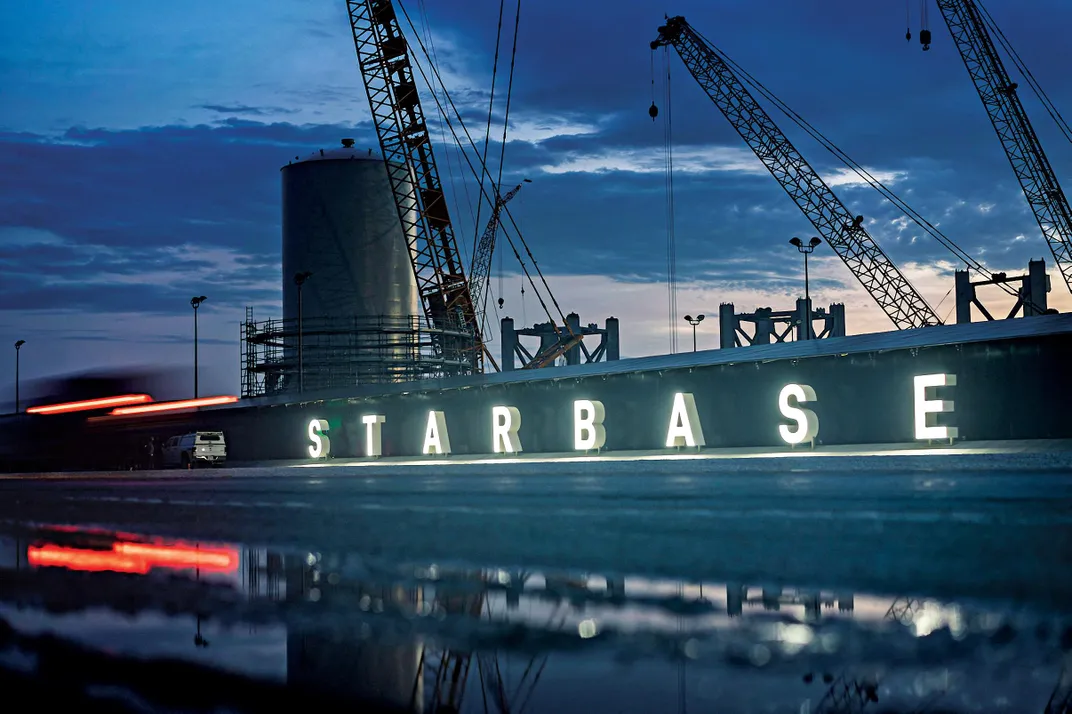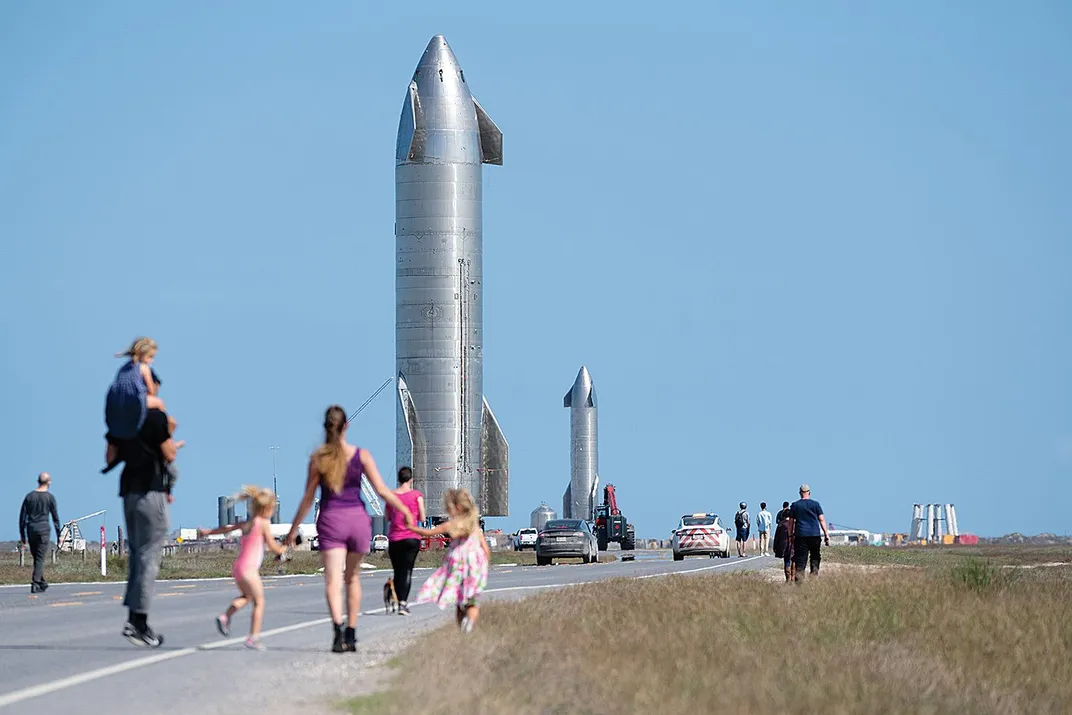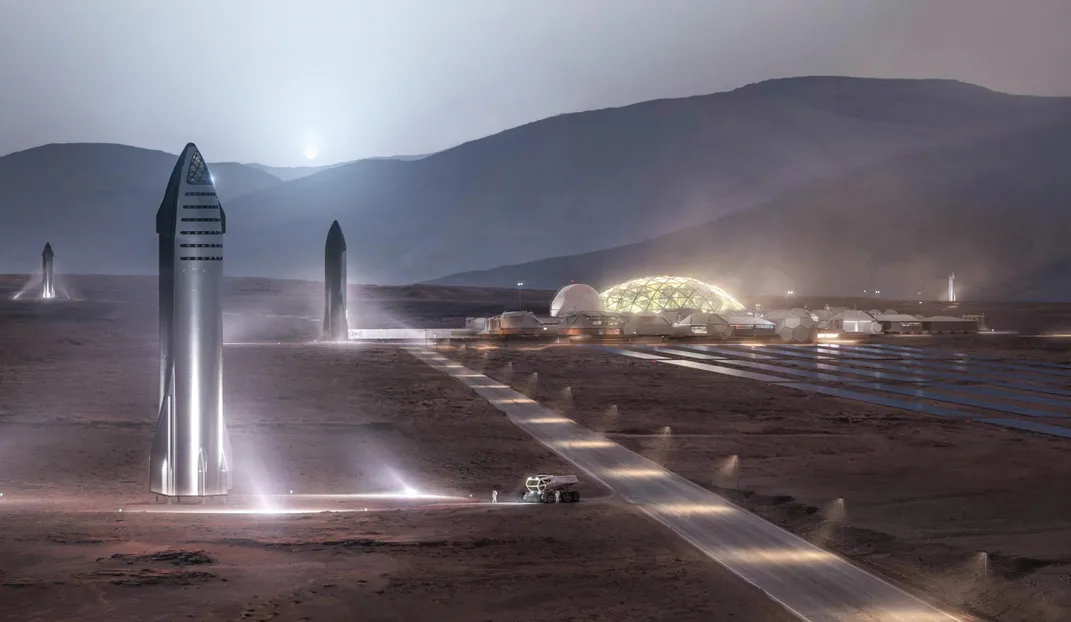Marsliner
Elon Musk’s giant Starship will leave the world behind.
/https://tf-cmsv2-smithsonianmag-media.s3.amazonaws.com/filer/1e/1c/1e1c96a1-a678-4330-ab0b-409c65a13590/starship_opener.jpg)
Late last summer, when millions of TV viewers were tuning in nightly to watch the world’s best athletes compete in the Tokyo Olympics, I had another world-class drama playing out by day in a YouTube window on my desktop. Near a small border town at the southernmost tip of Texas, a giant rocket, the tallest ever built, was coming together with astonishing speed.
Until recently, not a whole lot happened in those marshy flatlands where the Rio Grande flows languidly into the Gulf of Mexico. Boca Chica’s prior claim to historical significance was the Battle of Palmito Ranch in May 1865, the last battle of the Civil War. Then in 2014, SpaceX arrived. Seven years later, thousands of company employees and contractors are working nearly around the clock to build and launch the most powerful rocket in history, called Starship. The first launch to Earth orbit could happen within the next few months. The ultimate destination is Mars.
Outside the gates of Starbase, as the rapidly expanding facility is called, a mini-press corps of amateur and professional photographers watches every move. Enough cameras are pointed at Starship at any given moment that SpaceX founder Elon Musk jokes about going online whenever he wants to see how work on his new rocket is coming. NASASpaceflight.com runs a 24/7 YouTube channel called “Starbase Live.” Most times all you see is a distant tableau of rocket parts, storage tanks, and gantries, with the only action an occasional passing truck or swinging crane. But more than 50,000 viewers tuned in last August 6 to watch the Starship being briefly mated to the top of its even bigger “Super Heavy” booster for the first time—creating, for about an hour, a 395-foot-high launch vehicle. Even on slow days, a thousand viewers at a time might be watching Starship take shape. Thousands more discuss the day’s progress online with the fervor of sports fans. The chat is savvy and up to the minute, with its own nerdy jargon. “When will the Chopsticks be installed? Is that GSE Tank 7 there in the background?”
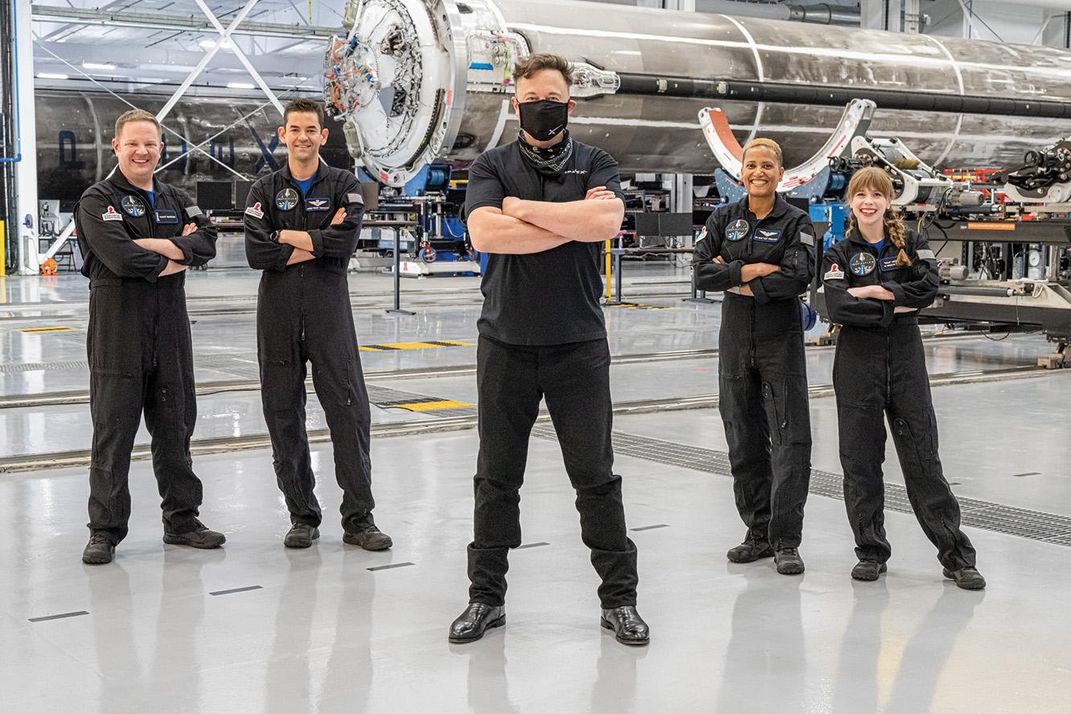
No rocket has ever had such a devoted fan base. The same goes for its creator. Elon, as everyone calls him, has more Twitter followers than Oprah or LeBron. There’s hardly any arena of 21st century technology he hasn’t touched: cars, solar power, batteries, broadband internet, robots, cryptocurrency, and artificial intelligence. In less than 20 years, Musk has taken SpaceX from a startup to the world’s premiere launch company.
That’s not enough for this self-taught engineer who became the richest person in the world. SpaceX’s Falcon 9 has made rocket reusability a cost-saving reality with its dramatic return-to-launch-site booster landings. But Falcon is only partly reusable and, therefore, not Mars-worthy. In an interview last year with Mars Society president Robert Zubrin, Musk said that, if the goal is sending lots of people and cargo to other planets, “We don’t want to be faffing around with expendable rockets. They’re a joke. They’re absurd. Even the Saturn V is tiny potatoes.” To settle Mars, he’ll need a vehicle that’s fully reusable, reliable, and rapid—as in, able to fly daily without a lot of expensive and time-consuming maintenance. Also huge, able to lift 150 tons to orbit.
And that’s what Starship is designed to be.
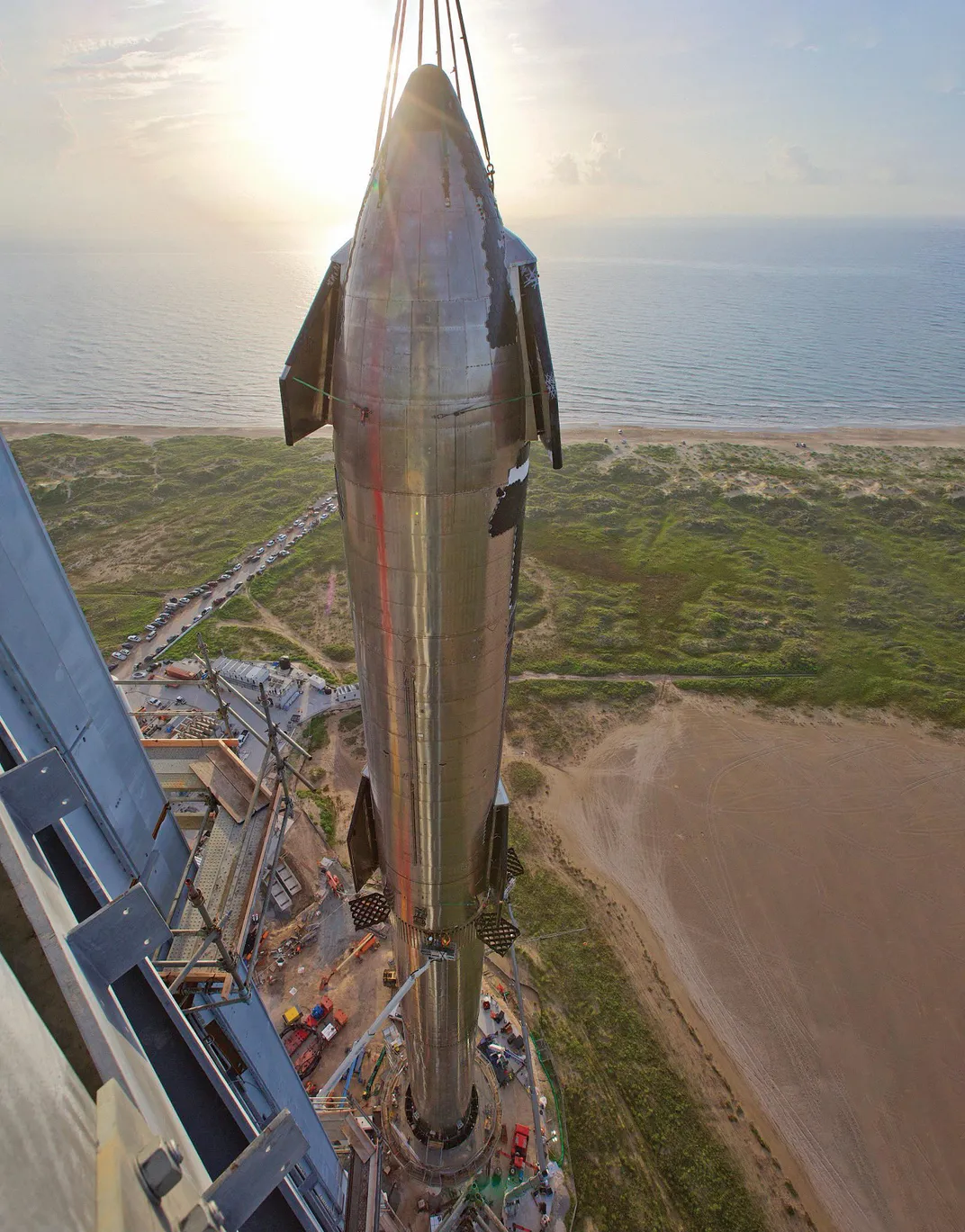
TIM DODD IS kind of a celebrity in Starbase’s informal press corps. His Everyday Astronaut YouTube channel has well over a million subscribers, and he regularly travels to Texas from his home in Iowa to report on Starship’s construction and testing. When he first came to Boca Chica in 2019, SpaceX was still working on its scaled-down “Starhopper” prototype vehicle. Back then, the base was “a field, a tent, and half a building. And that was it,” Dodd says.
The progress since then has amazed veteran space watchers. Zubrin, probably the Red Planet’s leading booster until Musk came along, likes to say that the SpaceX founder is “not just building a ship, he’s building a shipyard.” In mid-2019, Starhopper demonstrated SpaceX’s new methane-fueled Raptor engine, which for Starship will replace the Falcon’s kerosene-based Merlins. The full-size Starship itself was unveiled that September, and for the next year and a half reached progressively higher altitudes in test launches. Some of these exploded on landing or shortly afterward—giving, for a few months in early 2021, the outward appearance of failure. But the crashes didn’t rattle SpaceX, whose rapid prototyping and test-fail-test-again approach to development is how they used to do it in the early days of rocketry, and how they still do it in Silicon Valley. By May of this year, Starship number 15 landed without a hitch, having reached an altitude of 10 kilometers, convincing many doubters that this thing was for real.
Dodd scored a coup in July when Musk took him on a two-hour guided tour of Starbase. The videos, posted in three parts on the Everyday Astronaut channel, give a good sense of Musk’s engineering philosophy and first-principles thinking. As he strolls through Starbase fielding Dodd’s questions, his dog Marvin the Martian trotting alongside, the Chief Designer tosses off aphorisms like a space-age Ben Franklin.
On the value of speed: “If a design is taking too long, the design is wrong.” On the need to keep streamlining: “If you’re not adding things back 10 percent of the time, you’re clearly not deleting enough.” On the perils of conventional thinking: “It’s particularly dangerous if a smart person gave you the requirements, because you might not question them enough.”
SpaceX likes to hire young people, in part because they’re less set in their ways. And enough graybeards are on hand to serve as masters to the apprentices, according to Dan Rasky, an expert on thermal protection systems at NASA’s Ames Research Center. Rasky helped SpaceX develop the heat shield for its Dragon spacecraft—NASA’s taxi to the space station—back in that program’s early days. Musk likes to say that everyone working on Starship is a chief engineer, meaning that they’re supposed to think about the whole rather than just their own small part. He drives his team hard, and people are expected to embrace the pace. During Dodd’s tour, he and Musk met up with Sam Patel, director of Starship operations. Talking about some job that needed to be done in a hurry, Patel said, “I told the crane operator, what would you do if there’s an asteroid heading to this planet in eight days?” His boss added approvingly, “Yeah, exactly... I think if we operate with extreme urgency, then we have a chance of making life multi-planetary.... If we don’t act with extreme urgency, that chance is probably zero.”
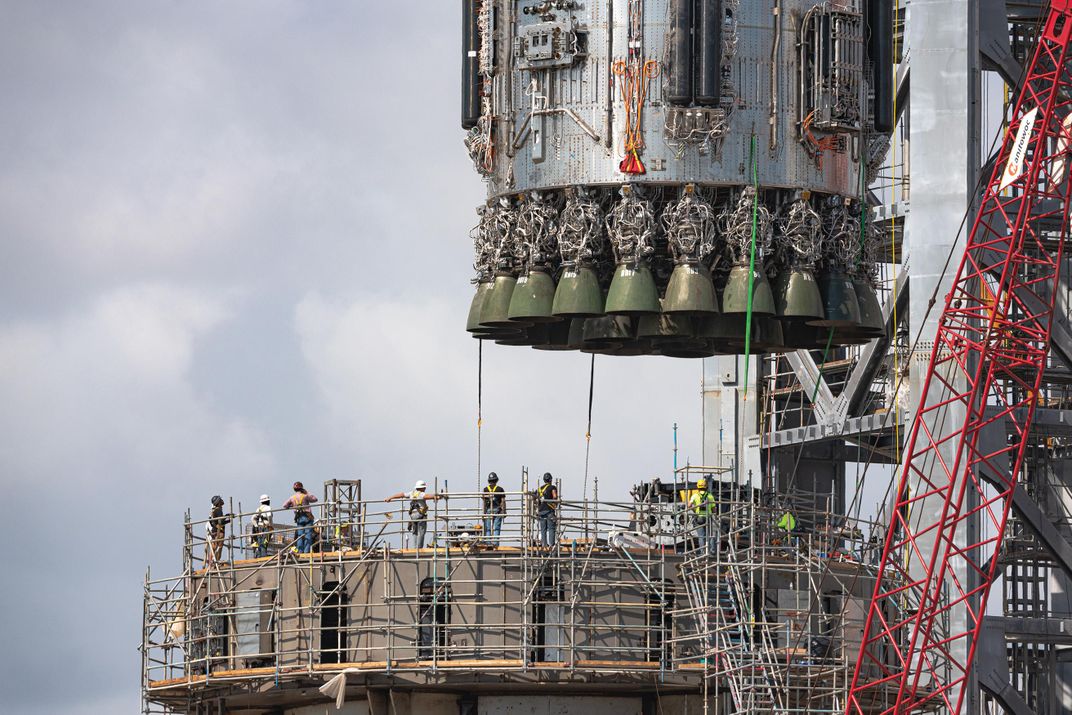
“ONE OF THE HARDEST engineering problems known to man is making a reusable orbital rocket,” Musk told writer Eric Berger for his 2021 book Liftoff. “It would be one of the biggest breakthroughs in the history of humanity.”
To make Starship fully reusable, and rugged enough to be “relaunched an hour after landing, with zero nominal work,” as Musk stated his goal last year, several daunting technical problems need to be solved—problems that have vexed aerospace engineers since the dawn of the space age.
One involves propulsion. The Raptor burns methane, which has advantages over the RP-1 kerosene used in Merlin. It’s fairly cheap. And it burns cleaner and cooler, both good for reducing wear and tear on engines that will fly many times. The Raptor is also very efficient, thanks to something called full-flow staged combustion, which had been studied but never implemented for NASA-funded rockets. “It’s a hard thing to do,” but SpaceX has achieved it with the Raptor, says Rasky, impressed. The engine comes in two flavors—one optimized for performance at sea level, the other for firing in the vacuum of space—and the orbital version of Starship will have three of each.
The Super Heavy first stage on which the Starship is mounted (confusingly, the entire launch system is also called Starship) might have as many as 33 Raptors, providing more total thrust than any rocket in history. That sounds like a scary amount until you consider that the Falcon Heavy already flies 27 engines.
SpaceX’s factory in McGregor, Texas, a few hours north of Boca Chica, is scheduled to crank out a mind-boggling 1,000 Raptor engines every year to supply the Starship fleet. That’s 10 times more than all the Saturn first-stage F-1 engines manufactured during the Apollo program. One advantage Musk has over most aerospace engineers is his experience with industrial assembly lines at Tesla. As he told Dodd during the Starbase tour, Raptor production will be “super high volume for big rocket engines, but low volume by automotive standards.”
Another hurdle Starship faces is how to handle the tremendous heat and energy of returning from orbit. It’s far more difficult than landing the Falcon 9’s first-stage booster on a barge; SpaceX has made that look routine. But the upper stage comes down from higher up, with much more velocity. Starship will have to slow from 17,500 miles per hour to zero at the time of touchdown.
One reason the rocket looks like something from a 1950s science fiction movie is that it’s made of shiny stainless steel. Originally it was to have been made of carbon fiber, but that technology was taking too long to develop, says Musk. So SpaceX switched to steel, a decision Rasky calls “brilliant.” Rockets like the Falcon 9 and Atlas V are made of aluminum because it’s lightweight, but by the time you add on enough thermal protection to keep aluminum from melting, you’ve erased some of that metal’s advantages. Steel can take more heat, and it’s far cheaper.
Parts of the Starship will be covered in hexagonal black tiles that Musk likens to “dragon scales.” The tiles on NASA’s space shuttle were notorious for requiring lots of time-consuming repair between flights, and the spaceplane’s irregular shape meant they couldn’t be fabricated in a standard size. Starship is mostly a big cylinder, so the tiles can be more uniform. Most can be mechanically attached instead of glued. They’re made, Rasky surmises (SpaceX doesn’t say), of an insulating material like the TUFI or TUFROC developed at NASA Ames and flown successfully on the Air Force X-37 mini-spaceplane. SpaceX will manufacture the tiles in-house—another way the company saves time and money—in a Florida shop it calls “The Bakery.” Rasky thinks the approach to thermal protection is sound, although we won’t know until the first test vehicles return from orbit.
Assuming it survives its superheated descent through the upper atmosphere, the Starship upper stage then does a long, horizontal belly flop through the lower atmosphere to increase drag and slow down. Stubby, wing-like flaps—some Starship-watchers dubbed them “Elonerons”—help control the descent and keep the rocket stable. Unlike Apollo or Dragon, no parachutes are required. At what looks like the last minute, the Starship gimbals its engines and tucks in its rear flaps to execute a flip to vertical, using as little fuel as possible for retro-propulsion before touchdown. It sounds crazy, but last May, Starship 15 demonstrated the wild, swinging maneuver and landed safely at the launch pad.
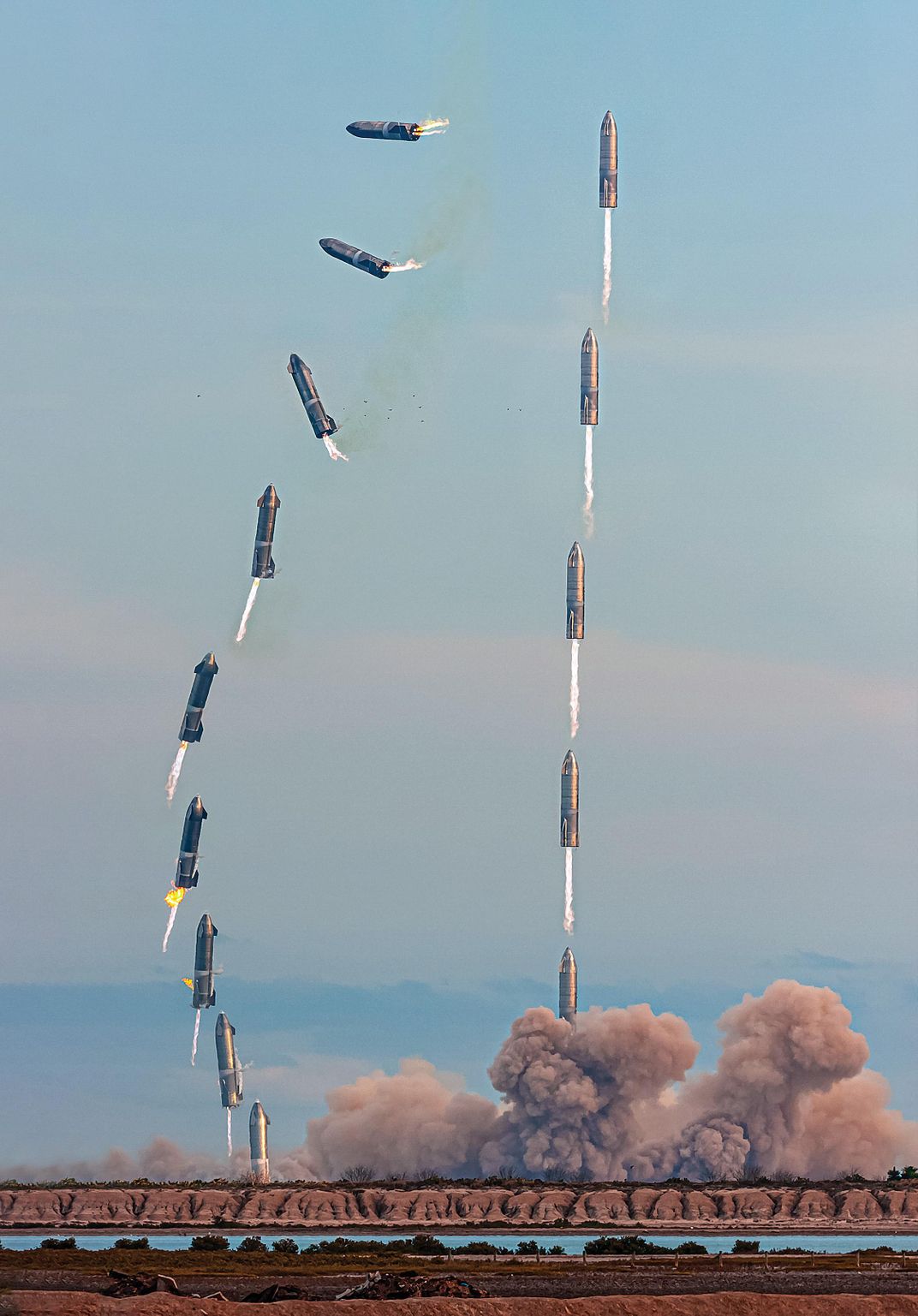
SpaceX has come up with another innovation in its quest to shave weight from the vehicle and transfer it to ground infrastructure instead. Instead of landing on legs, both Starship and the Super Heavy booster will be caught just before touchdown by two huge mechanical arms attached to the launch tower, which Musk calls “Mechazilla.” As he joked on Twitter, they’ll be trying to “catch the largest ever flying object with chopsticks.” Musk told Dodd, “When I suggested that, people thought I lost my mind. Which I’m like—maybe I have. I think it might take a few kicks of the can, but we’ll get it right.”
One final, critical element in the Starship mission architecture is orbital refueling. The standard vehicle uses almost every last drop of propellant just getting 150 tons of payload to orbit. So additional Starships outfitted as tankers—the basic model can be configured for different jobs—will be launched to gas up the empty Starship in Earth orbit so it can head on to the moon, Mars, or wherever. This is harder than it sounds. Transfer of cryogenic propellants from one vehicle to another has never been done in space, says Dan Tiffin, a mission analyst at NASA’s Langley Research Center, who wrote his master’s thesis on the subject. SpaceX will try to demonstrate the technique in orbit next year, with $53 million in NASA funding, by transferring 10 tons of liquid oxygen from one Starship to another. Ten tons, says Tiffin, is a “huge” amount. “It’s a challenge,” he says. “That’s why it’s been so long and we still haven’t done it. With Starship, now we have a good reason to do it.”
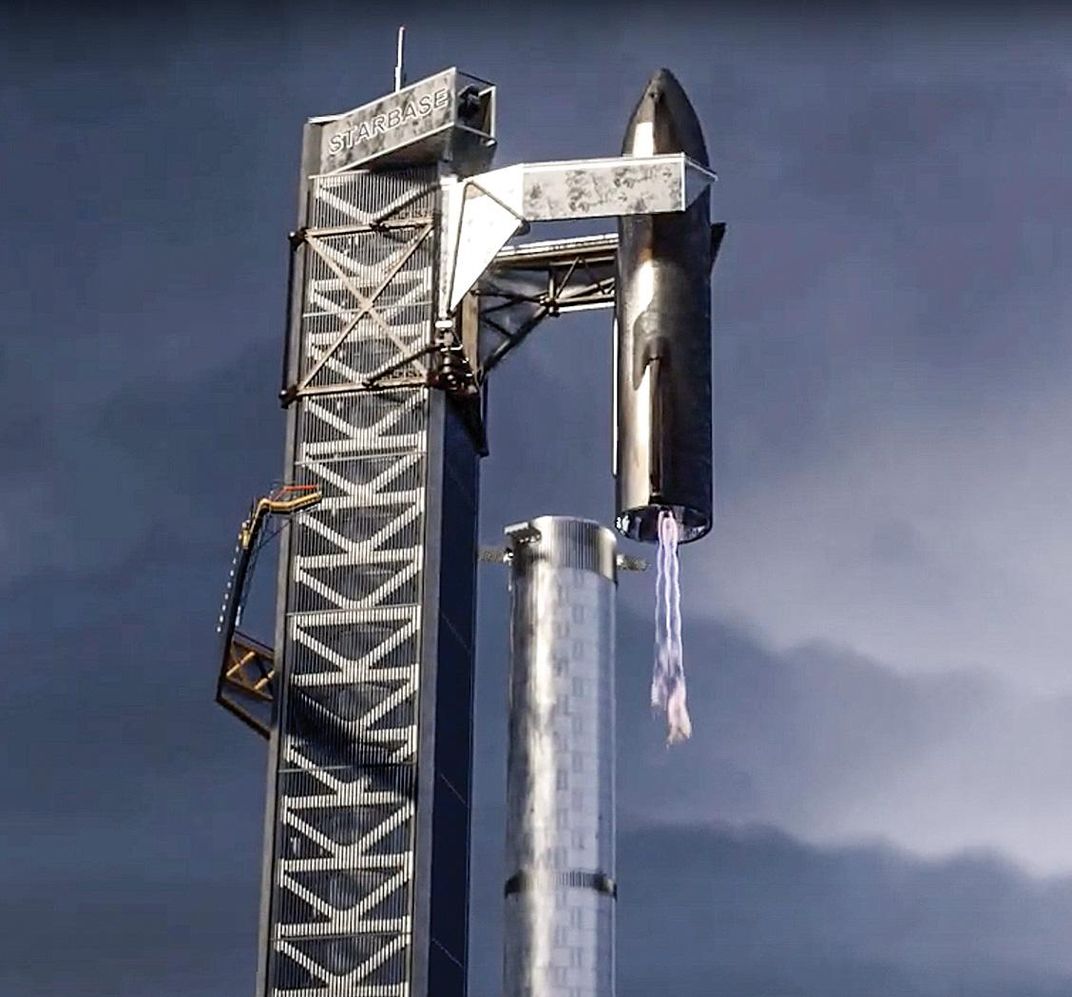
IF SPACEX CAN PRODUCE and launch its new rocket in volume—getting the manufacturing system right is harder than the engine design, says Musk—and truly deliver on the three R’s (rapid, reusable, reliable), Starship will completely transform the space business. Even if the ambitious $2 million-per-launch target is off by an order of magnitude, hauling 150 tons to orbit every day enables projects that have never been possible. Having learned the ropes of spaceflight through its Falcon rocket and Dragon capsule contract flights for NASA, the student will surpass the master. And the space agency is fully on board.
NASA surprised many in the space industry last April by selecting Starship as the vehicle to land the next American astronauts on the moon, as early as 2024. SpaceX beat out Dynetics and a “National Team” of Jeff Bezos’s Blue Origin, Lockheed Martin, Northrop Grumman, and Draper Labs—a formidable-sounding partnership of old and new space companies—in part because its $2.9 billion bid was about half the National Team’s.
Cost was only part of it. In a statement explaining the award decision, Kathy Lueders, the NASA administrator who as head of the agency’s commercial space program shepherded SpaceX through its learning years and who now directs human spaceflight operations, praised Starship’s “immense value for NASA for lunar and deep space exploration activities.”
SpaceX’s design for the Human Lander System—basically a Starship optimized for landing and taking off from the moon—has certain drawbacks, including the need for a dozen or so Starship tanker launches to provide enough fuel for the mission. While noting the risk, NASA emphasized that Starship will far outperform the other proposed vehicles in terms of payload landed and returned from the moon. In one flight, Starship can bring back more lunar samples than did all the Apollo astronauts put together, with room to spare.
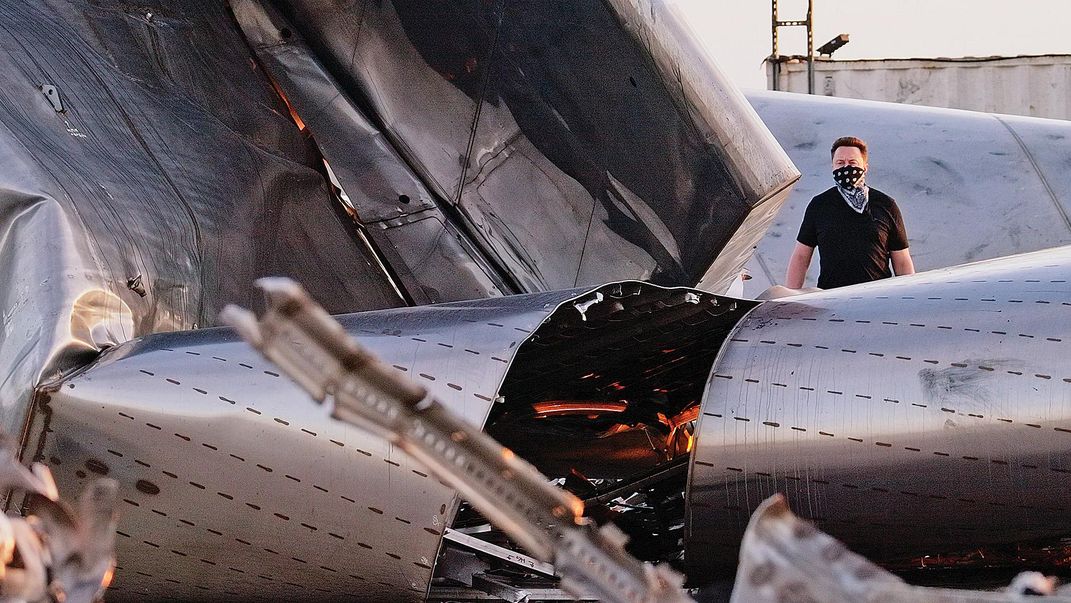
The moon is just the start. Planetary scientists and astronomers are salivating in anticipation of a heavy-lift rocket that costs only $2 million, since launch expenses, particularly for spacecraft headed to the outer solar system, break many a mission’s budget before they even leave the drawing board (by comparison, NASA will pay $178 million to launch its Europa Clipper on a Falcon Heavy). If the soon-to-launch James Webb Space Telescope were placed inside a Starship’s cavernous payload compartment, its mirror wouldn’t have to fold up to fit, which would have spared its designers countless headaches. Future telescopes won’t be so constrained. NASA’s Goddard Space Flight Center, which is developing an even bigger telescope for finding habitable planets (see “The Space Telescope That Could Find a Second Earth,” Apr./May 2021) enthused on its Twitter account in 2019: “We asked and SpaceX checked. The LUVOIR space telescope concept can indeed fly on Starship!”
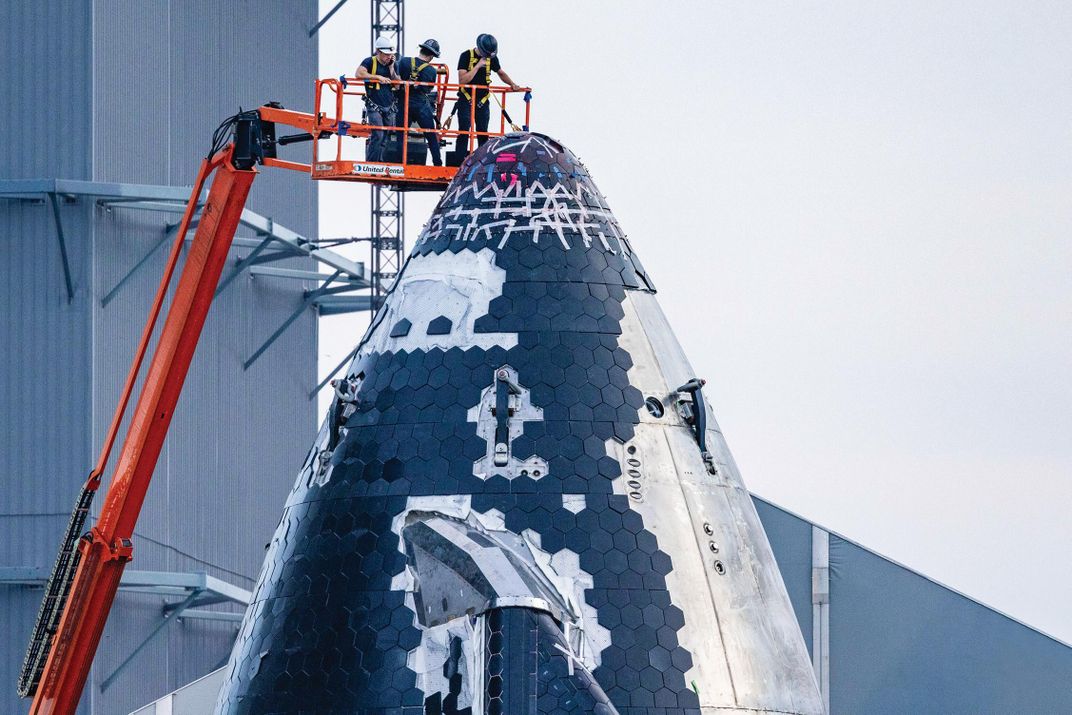
The possibilities go well beyond science.
Michael Mealling is a partner in Starbridge Venture Capital, a space investment firm. Seventeen years ago, he co-founded Masten Space Systems, now an established company preparing to put small robotic landers on the moon. Mealling is bullish on SpaceX and thinks NASA’s lunar missions will end up as “just another line of business” for Starship. SpaceX also hopes to corner the satellite broadband market with Starlink satellites launched in bulk by the new rocket (1,800 are already in orbit). Revenue from Starlink will pay for more Starships. So will money from flights like Inspiration 4, which carried a handful of private space travelers to Earth orbit in September. Starship could routinely fly several dozen people at a time. “I fully expect to see Starships as luxury yachts,” says Mealling. Musk has even talked about using them for point-to-point passenger travel on Earth. Sure, why not? Disruptors gonna disrupt.
Every person I interviewed for this story—SpaceX declined to make anyone available—thinks Starship has a decent chance of succeeding, technically and financially. It likely won’t happen as fast as Musk hopes (he admits to being “optimistic on schedules”), but if Starship reaches orbit within the next year, it could be on the moon by mid-decade.
Musk’s dream, though, is putting a million people on Mars, and that will require a lot more than just transportation. John Saiz, a former chief technologist at NASA’s Johnson Space Center and now an expert in innovation management with IfM Engage at the University of Cambridge, says, “I applaud what [SpaceX] has been doing over the last number of years, but they’ve had help.” Establishing settlements on Mars “will take a lot more resources than [Musk] has.”
Mealling isn’t so sure. SpaceX is already valued at $100 billion—four times NASA’s annual budget—and investors are falling over themselves to give more, even before the stock goes public. “What we hear a lot is people saying, ‘I like the immediate, near-term payout of Starlink, but also want to take that SpaceX stock and put it into a Roth IRA for my great, great grandchildren,’ because—we heard this several times—‘I want them to own a piece of Mars.’ ” So does Musk. He talks about making humans a “multi-planetary species” and sees the migration to Mars as insurance against possible extinction.
Others see it as escapism, in a time of great social upheaval. Musk will no doubt have plenty of volunteers for his Mars expeditions, but society in general is not as gung-ho. When pollsters ask Americans what NASA’s priorities should be, human journeys to the moon and Mars consistently end up at the bottom of the list, far below improving life on Earth.
You could hardly find someone with more Mars cred than science fiction writer Kim Stanley Robinson. His Mars trilogy, starting with Red Mars written nearly 30 years ago, is still considered the most plausible depiction of future life on the Red Planet. Lately, though, Robinson’s novels have been more concerned with Earth’s precarious future. In a recent interview on the Chapo Trap House podcast, he said, “Mars is irrelevant now. The climate crisis has overwhelmed it.” Only if humanity solves that more pressing problem should it turn to Mars “as a kind of reward.”
Musk could well counter that he’s doing his part to wean society from fossil fuels, with big investments in electric cars and solar power. But his passion, the reason Starship even exists, is Mars.
And if SpaceX doesn’t get us there, who will? NASA is now targeting the late 2030s for landing a couple of people on the Martian surface for 30 days, to drill ice cores—hardly a city. When NASA officials talk about sending people to Mars, they have a dispiriting tendency to focus on how much money they’ll need and which office will do what. They show conceptual “swoosh” charts of missions whose penciled-in launch dates keep slipping to the right. Musk tweets about hardware installed on the Starship today. And that’s the difference. He acts like he wants to go to Mars now, not in some vague future that’s always beyond our reach.
